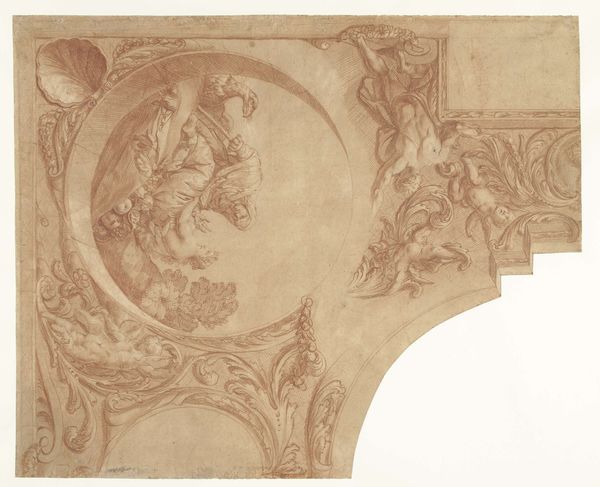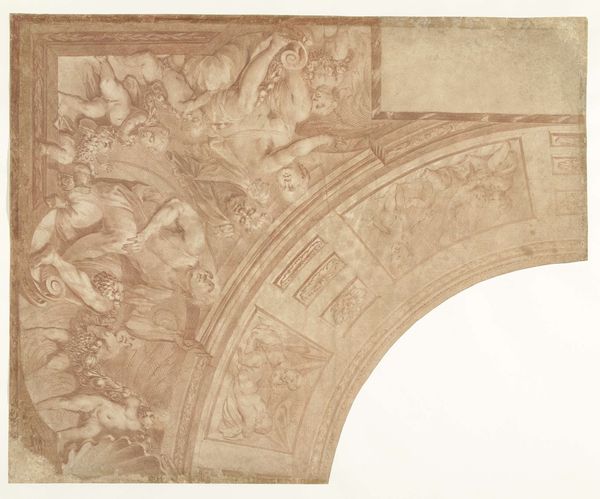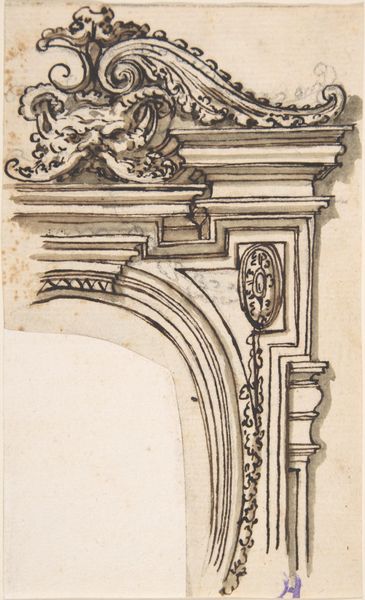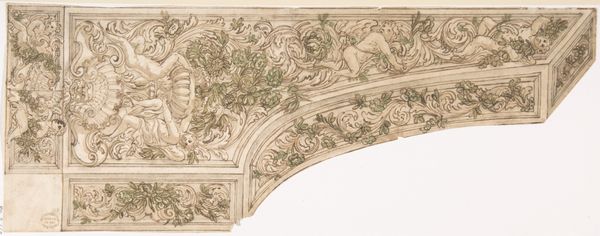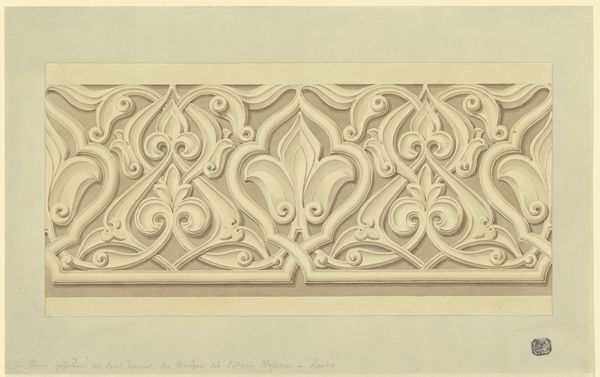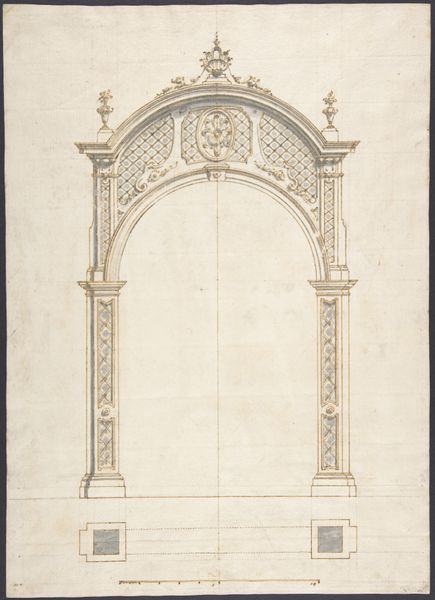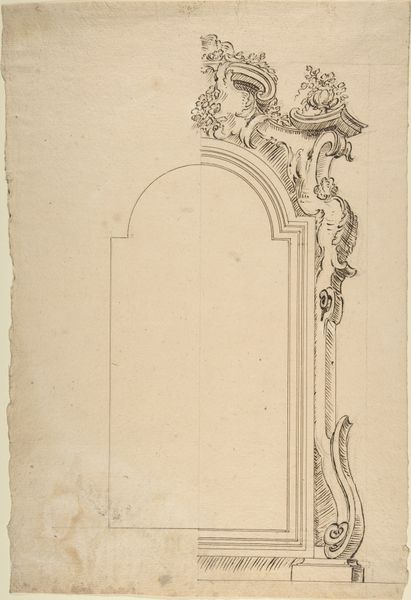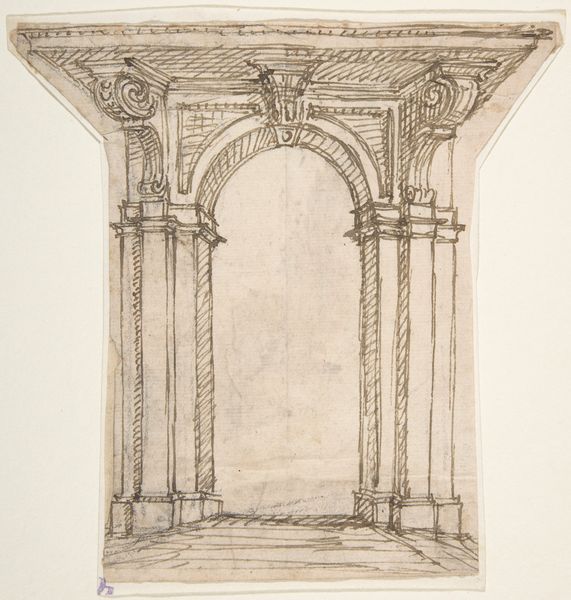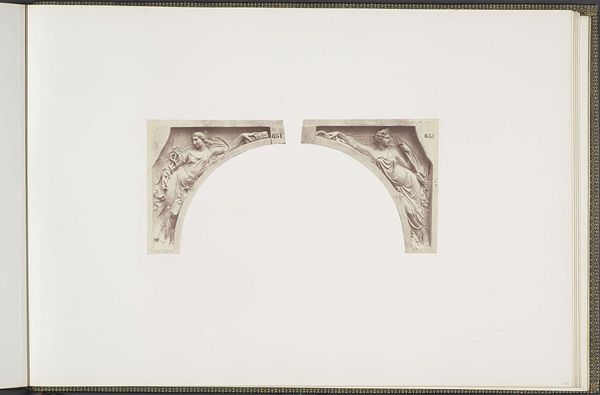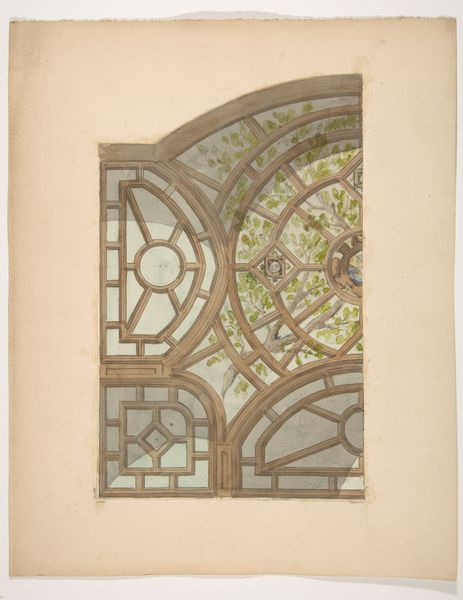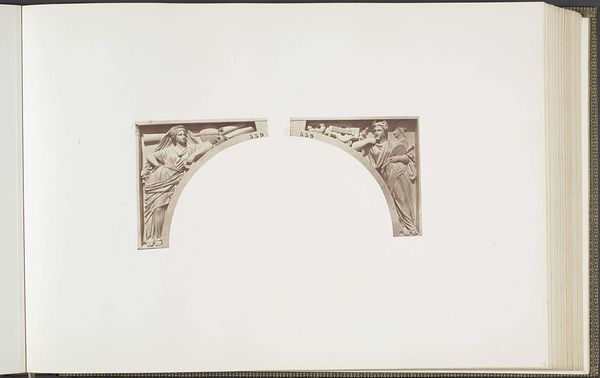
Hoekstuk van een plafond met acanthusbladeren en guirlandes 1680 - 1757
0:00
0:00
mattheusterwesten
Rijksmuseum
drawing
#
drawing
#
baroque
#
academic-art
#
decorative-art
Dimensions: height 525 mm, width 460 mm
Copyright: Rijks Museum: Open Domain
Curator: This is a study entitled "Hoekstuk van een plafond met acanthusbladeren en guirlandes," or "Corner Piece of a Ceiling with Acanthus Leaves and Garlands." The drawing, likely preparatory for a larger decorative scheme, is attributed to Mattheus Terwesten and dates from the late 17th to mid 18th century. Editor: My initial impression is that it feels incredibly opulent, but almost ghostly. The monochromatic wash, the skeletal quality of the drawing – it’s grandeur tempered by a strange sense of impermanence. Curator: Precisely. The Baroque loved this play of grandeur and the ephemeral. Terwesten’s drawing showcases the intricate designs favoured in academic art of the period – consider how these corner pieces served to enhance interiors, reflecting wealth and power. These elaborate ceiling decorations contributed to constructing elaborate interior spaces that were often used to project authority and impress visitors. Editor: It's interesting you mention authority. To me, that level of ornate decoration can feel suffocating, a visual assault on the senses that reinforces a strict social hierarchy. Who were these spaces really for, and who was excluded? These decorative styles became cultural and economic symbols associated with power and prestige during colonialism. Curator: The commission of such pieces was undeniably linked to wealthy patrons and the political climate of the time. While the Baroque emphasized drama and emotional impact through art, it also firmly upheld existing societal structures. These artistic styles influenced global empires through architecture and decor reinforcing Europe's status and ideologies. Editor: Absolutely, art, even decorative art, serves a purpose beyond aesthetics. Thinking about who designs these opulent spaces, who commissions them, and whose labor allows their creation becomes crucial to analyzing art history from broader class, race, and gender perspectives. Curator: Examining works like this also reminds us that art history isn't just about identifying masters or movements. It's about understanding the complex web of factors—social, economic, and political—that shape the art we see and experience, allowing for critical reflection. Editor: And reflecting on how these histories continue to shape our present and future artistic creations and conversations. Art exists in an ongoing dialogue, constantly reframed through the lens of contemporary social consciousness.
Comments
No comments
Be the first to comment and join the conversation on the ultimate creative platform.
